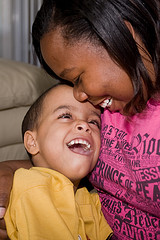Disaster readiness: The Essentials Of Emergency Supplies
Whether it’s earthquake, overflow, tornado, hurricane, or clean fire, we’re all motivated to be prepared. And what much better way to ensure your family’s wellbeing than to have the crisis supplies you need always at hand? When people feel prepared, these people cope with emergencies better. therefore make it a family project to assemble what you need.
Before disaster strikes
Although you can’t always understand in advance when a particular catastrophe will strike, seasonal or even regional patterns can often tell you what to expect. Be sure to have on hand the supplies your family will need.
Water: You should store at least one gallon of water per person per day, for a minimum of 3 days. A normally energetic person needs at least one-half gallon of water every day just for drinking. Other requirements include washing, cooking plus sanitation. Children, nursing moms, and those who are ill need more water. High temperatures can dual the amount of water needed.
To be prepared with the safest crisis supply, it is recommended you purchase in a commercial sense bottled water. Keep bottled water in its original container and do not open it until you need it. Store the containers in a cool, darkish place, and rotate all of them every six months.
Food: Include a three-day supply of non-perishable meals per person, avoiding items that will make you thirsty. Choose salt-free crackers, whole grain cereals, plus canned foods with high water content. Stock canned food items, dry mixes, and other favorites that don’t require a fridge, cooking, water, or unique preparation.
Individuals with special diet programs and allergies will need specific attention, as will infants, toddlers and elderly people. medical mothers may need liquid method, in case they are unable to health professional. Canned dietetic foods, fruit juices and soups may be helpful for ill or elderly people.
some other Emergency Supplies: Include these items in your emergency kit.
•Emergency Radio
•Emergency Sanitation Supplies
•Kitchen accessories and cooking food utensils, including a can opener
•Shovel and other useful tools
•Emergency Lighting
•Household water bleach to treat drinking water
•Money and matches in a water-resistant container
•Fire extinguisher
•Gas and Water Shut off Tools
•First aid kit plus manual
•Photocopies of credit score and identification cards
•Special needs items, such as eye glasses, contact lens solutions, and hearing aid batteries
•Items for babies, such as formula, diapers, containers, and pacifiers
•Other items to meet your unique family needs
Clothing: If you live in a cold climate, you must think about warmness since you may be without warmth for a time. Be sure to include 1 complete change of clothes and shoes per person, which includes:
•Jacket or coat
•Long pants
•Long sleeve shirt
•Sturdy shoes
•Hat, mittens, and scarf
•Sleeping handbag or warm blanket
storage space: Just as important as putting your own supplies together is keeping them so they are safe to use when needed. Here are some tips to keep your materials ready and in good condition:
•Keep canned foods in an awesome dry place.
•Store encased food in tightly shut plastic or metal storage containers to protect from pests and to extend shelf life.
•Throw away any canned good that will becomes swollen, dented, or even corroded.
•Change stored food and water supplies every six months. Be sure to write the storage day on all containers.
•Re-think your needs every year and update your own kit as your family requirements change.
•Keep items within airtight plastic bags and put your entire disaster supplies package in one or two easy-to-carry storage containers, such as an unused trashcan, camping backpack, or duffel bag.
Ensure you are ready for long term events by restocking your own emergency supply kits right now. Then, if things go wrong, you’ll be prepared.

